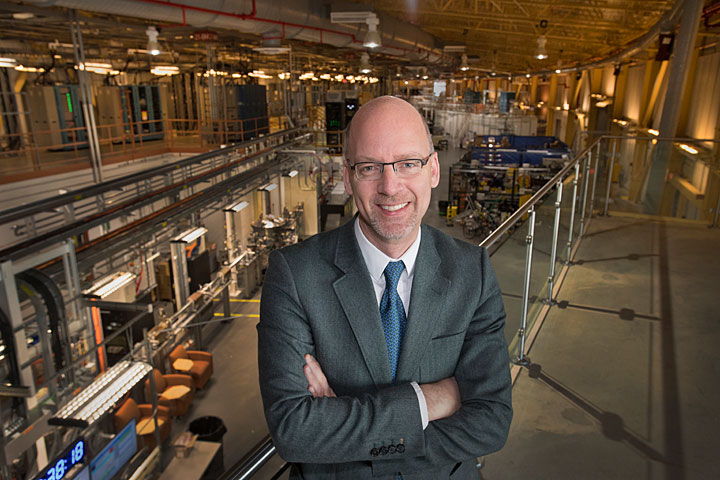More Operating Beamlines and Modes of Access Than Ever Before
May 17, 2019
Welcome back, everyone, to this late spring issue of News @ NSLS-II!
First, I have to say I am very excited about this issue because we are introducing a number of positive changes for our users.
More beamlines in General User Operation
I start with the announcement that we have two new beamlines that transitioned from science commissioning to general user operation in the past few months: the Pair Distribution Function (PDF) beamline and the Biological Microdiffraction Facility (NYX).
The PDF beamline enables studies of nanoscale structural fluctuations and hidden broken symmetry phases in complex materials by using pair distribution function analysis. The NYX beamline offers hard x-ray macromolecular crystallography with high energy resolution for the study of proteins and complex biological molecules. To develop and run NYX, we partner with the New York Structural Biology Center.
Multiple beamlines in one proposal!
I am also pleased to announce that you can now request multiple beamlines on a single proposal – coined a “multimodal” proposal. For General User Proposals, users may request up to three beamlines; for Block Allocation Groups (BAG), Partner User, and Proprietary Proposals, users may request up to five beamlines.
For more information please see Lisa Miller’s article about the new modes of access at NSLS-II.
More beamlines for the BAG proposals
Beginning this proposal deadline, I’d like to draw your attention to the fact that we have expanded the number of beamlines that are accepting BAG proposals. These allow groups wishing to carry out large numbers of fast, routine measurements to combine their efforts to make more efficient use of beamtime. The program has been so successful that we are now accepting BAG proposals on the following spectroscopy, scattering, and diffraction beamlines: ISS, CMS, and XPD. Please see Lisa Miller’s article for more details about BAG proposals. We hope this will promote new collaborations by shared scientific interest, geographical location, affiliation, common experimental setup, or other synergistic reasons, and that users will take advantage of this mode of access.
New Science Opportunities with PDF
Transitioning the PDF beamline into General User Operation opens new pathways at NSLS-II to reveal nanoscale structural fluctuations and hidden broken symmetry phases in next generation complex materials. The beamline is capable of reaching a photon energy of 117 keV and achieves a high momentum transfer (Q) range of 35-40 (inv. ang.). This new development offers more sample options, such as thicker materials or high Z materials, and enables different sample environments with smaller exit angles. It opens the doors to new science cases that require a high Q range and the potential to perform higher resolution PDF studies on complex materials.
Finally, I hope to see you at our NSLS-II & CFN Users’ Meeting, from May 20 to 22, and at our exciting Strategic Planning Workshop, “Exploring New Science Frontiers at NSLS-II,” from Oct 21 to 23. The workshop will serve as a forum for the community to discuss the big questions in a number of areas of science and explore ways in which future capabilities at NSLS-II could have impact in addressing those questions.
In the rest of this newsletter, you will find articles on some of the exciting science that has recently been carried out at NSLS-II and a link to submit your beam time proposals (next deadline is May 31, 2019).
Thank you for taking the time to read our newsletter and I hope to see you at NSLS-II in the near future!
John Hill, NSLS-II Director






